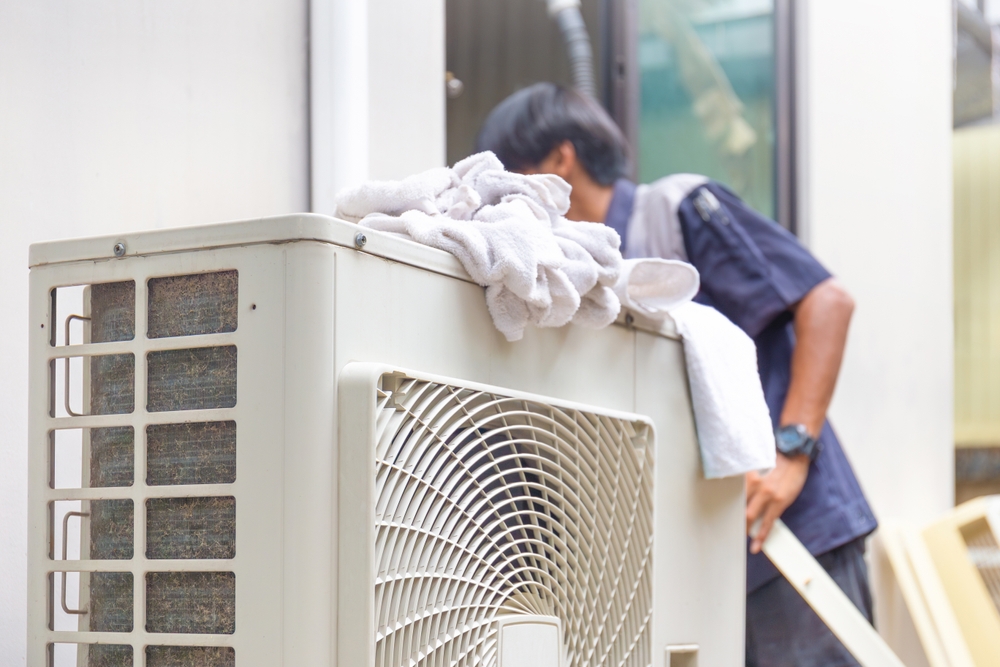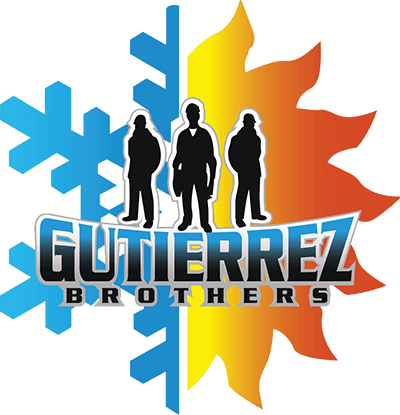How the Orange County Climate Affects Your HVAC System, And What to Do About It

Understanding how your local climate interacts with your heating and cooling infrastructure is crucial for homeowners and businesses alike. In Orange County, NY, the unique blend of seasonal weather—ranging from humid summers to snowy winters—places a year-round demand on HVAC systems. This extended workload impacts efficiency, maintenance needs, and ultimately, HVAC system longevity. By gaining a deeper understanding of how weather affects HVAC performance and taking proactive measures, you can protect your investment and ensure year-round comfort.
A Four-Season Climate and Its Demands on HVAC Systems
Orange County, NY is no stranger to temperature extremes. Summers can climb into the high 80s and low 90s with high humidity, while winters often bring sub-freezing temperatures, snowfall, and icy conditions. This wide climate range means your HVAC system isn’t just a seasonal amenity—it’s a vital year-round utility. Unlike regions with milder or more predictable weather, the systems in Orange County must be robust enough to cool efficiently in sweltering July and heat reliably during icy January.
These environmental pressures contribute significantly to wear and tear. Each cycle of heating in winter and cooling in summer causes thermal stress on the system’s mechanical components. Compressors, fans, and heat exchangers are frequently activated, leading to fatigue over time. Seasonal transitions also prompt frequent thermostat adjustments, increasing operational frequency and reducing downtime for your equipment. All of this shortens the potential lifespan of your system unless it’s built and maintained with the local climate in mind.
How Humidity, Snow, and Storms Interact with Your HVAC System
Humidity, a defining factor in Orange County’s summer climate, plays a major role in HVAC performance. When moisture levels are high, air conditioners must work harder to remove both heat and excess humidity from indoor air. This dual workload strains cooling coils, increases energy usage, and can result in frozen evaporator coils or system inefficiency if not properly maintained. An improperly sized or outdated system may cycle continuously without ever truly dehumidifying a space, leading to discomfort and inflated energy bills.
In winter, snow and ice can wreak havoc on HVAC components—particularly outdoor units and ventilation systems. Heat pumps, if used, often lose efficiency in sub-freezing temperatures, requiring backup heat sources that can significantly raise utility costs. Snow accumulation around outdoor units can block airflow, cause corrosion, or result in system shutdowns. Likewise, storm-driven debris can obstruct vents, damage fan blades, or disrupt the calibration of sensitive electronics within modern HVAC systems.
Severe weather events, including thunderstorms and nor’easters, can cause sudden power losses or surges that may damage circuit boards, thermostats, and control modules. Even small fluctuations in power can result in system malfunctions over time. Climate impact on heating and cooling systems in regions like Orange County is not only about temperature—it’s a complex interaction of moisture, wind, debris, and electrical stability.
The Financial Toll of Climate-Stressed HVAC Systems
The continuous strain imposed by Orange County’s climate can translate to increased costs—both immediate and long-term. The most visible expense is elevated energy consumption. When systems are forced to work harder due to extreme weather or inadequate maintenance, efficiency drops and energy bills rise. Cooling inefficiencies in humid summers or overreliance on emergency heat in winter are two common culprits of inflated costs.
Next are repair costs. Shortened component lifespans due to climate-induced wear can lead to frequent service calls. Condenser fans may burn out, capacitors may fail under frequent cycling, or filters may clog faster due to dust and pollen stirred up during stormy conditions. Left unchecked, these seemingly minor issues can compound and lead to full system failures.
Then there’s the ultimate expense: premature replacement. The average HVAC system is designed to last 15–20 years, but in a high-demand climate, that range can shrink to 10–12 years without careful upkeep. HVAC system longevity is significantly impacted by regional climate variables, especially if the system was not properly sized, installed, or maintained for local conditions.
Homeowners who neglect regular maintenance or continue operating outdated, inefficient systems will find themselves stuck in a costly cycle of repairs and energy waste. The financial difference between a neglected and a well-maintained HVAC system in Orange County can add up to thousands of dollars over the course of a decade.
What You Can Do to Optimize HVAC Performance in Orange County
Fortunately, the climate’s toll on HVAC systems can be managed with proactive planning and regular upkeep. First and foremost, preventative HVAC maintenance is essential. Annual tune-ups—ideally one in spring and another in fall—allow professionals to clean coils, check refrigerant levels, test electrical components, and replace worn-out parts before extreme temperatures set in. These services ensure your system is operating efficiently during the most demanding seasons and help avoid mid-season breakdowns.
Proper insulation and sealing also play a crucial role. Homes in Orange County should be insulated against both heat and cold to reduce the load on HVAC systems. Caulking around windows, adding insulation in attics, and ensuring ducts are properly sealed can drastically cut energy consumption. These improvements reduce temperature fluctuations inside the home and minimize how weather affects HVAC performance.
Upgrading to climate-adapted HVAC technology is another valuable step. Systems with variable-speed compressors and smart thermostats adjust more accurately to changing weather conditions, improving comfort while reducing wear. High-efficiency models certified by ENERGY STAR can handle the wide demands of Orange County’s seasons better than older models. Heat pumps rated for low temperatures are now available and increasingly common in the Northeast, providing year-round efficiency.
In homes with significant humidity challenges, consider adding a whole-home dehumidifier. These systems lighten the load on your AC during the summer by independently managing moisture, improving indoor air quality and reducing the chances of mold or mildew. In winter, humidifiers can maintain air moisture at healthy levels to avoid dry skin, static, and stress on wooden furniture and instruments.
Lastly, don’t overlook air filtration. Seasonal allergens, wildfire smoke, and storm-driven dust can overwhelm basic filters. Upgrading to a higher-efficiency filter or incorporating an air purification system can relieve strain on your HVAC while improving air quality—a key benefit for families with allergies or respiratory concerns.
Long-Term Planning for a Resilient HVAC Investment
Investing in your HVAC system is not just about staying comfortable—it’s about protecting your home’s value and reducing long-term costs. For Orange County residents, that means planning around a complex climate pattern that doesn’t take seasons off. Whether it’s heatwaves, polar vortexes, or heavy spring rains, the region’s weather presents continuous challenges for indoor climate control.
To extend HVAC system longevity, make system selection, maintenance, and climate adaptation part of your long-term home strategy. Begin by assessing your current system’s performance. Is it over 10 years old? Do you experience hot or cold spots? Are your energy bills higher than expected for your home size? These are signs that your system may no longer be well-matched to the local climate.
Next, work with an HVAC professional familiar with Orange County weather trends. They can conduct a proper load calculation to ensure any new system is sized appropriately—not too big or small—for both heating and cooling needs. Oversized systems can short-cycle and wear out faster, while undersized systems may run endlessly without delivering comfort.
Consider enrolling in a service contract with a reputable HVAC company. These programs often include regular maintenance visits, priority scheduling, and discounts on repairs. Given the dynamic weather in Orange County, having reliable service on standby isn’t just convenient—it’s smart financial planning.
Finally, keep an eye on emerging HVAC technologies. The field is rapidly evolving to meet the challenges of extreme climates with innovations like geothermal heat pumps, energy recovery ventilators (ERVs), and AI-driven thermostats. These tools offer impressive energy savings and greater resilience in unpredictable weather.
Conclusion
The climate impact on heating and cooling systems in Orange County, NY is undeniable. But with informed choices, regular care, and a willingness to invest in modern solutions, homeowners can meet these challenges head-on. Your HVAC system doesn’t have to be a casualty of the weather—it can be a high-performing ally in your quest for comfort and efficiency.
Need Reliable HVAC Services Near You?
Here at Gutierrez Brothers HVAC, we take pride in delivering top-quality heating and cooling solutions tailored to your needs. With over 15 years of industry expertise and a commitment to excellence, our team is here to ensure your home stays comfortable year-round. Whether you need a new system installation, routine maintenance, or an emergency repair, we’ve got you covered with reliable, efficient service. Based in Middletown and serving Orange County, we’re fully licensed in Westchester County (WC-38209-H24) and dedicated to making a difference in our community. Give us a call today and experience the Gutierrez Brothers HVAC difference!
